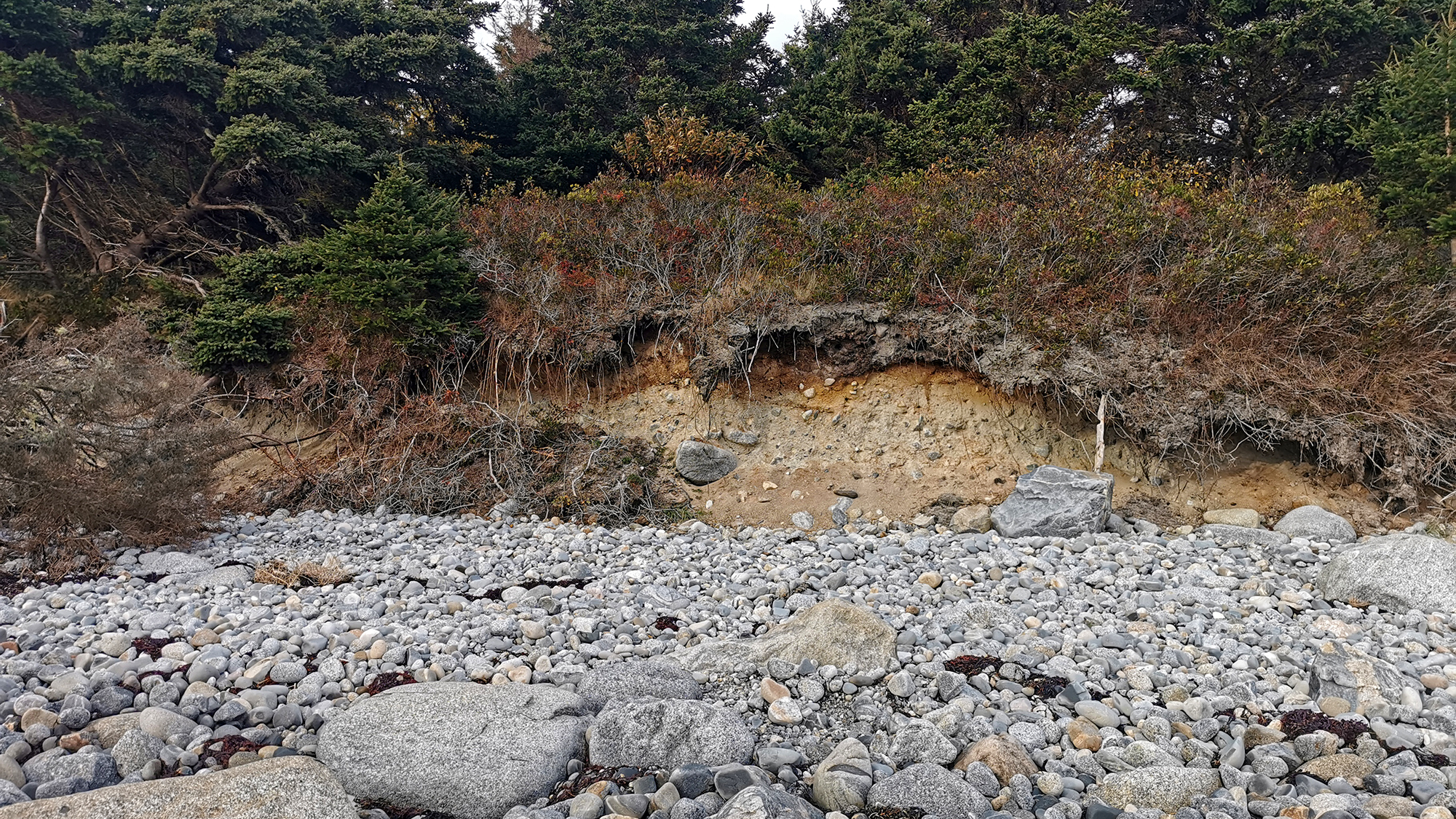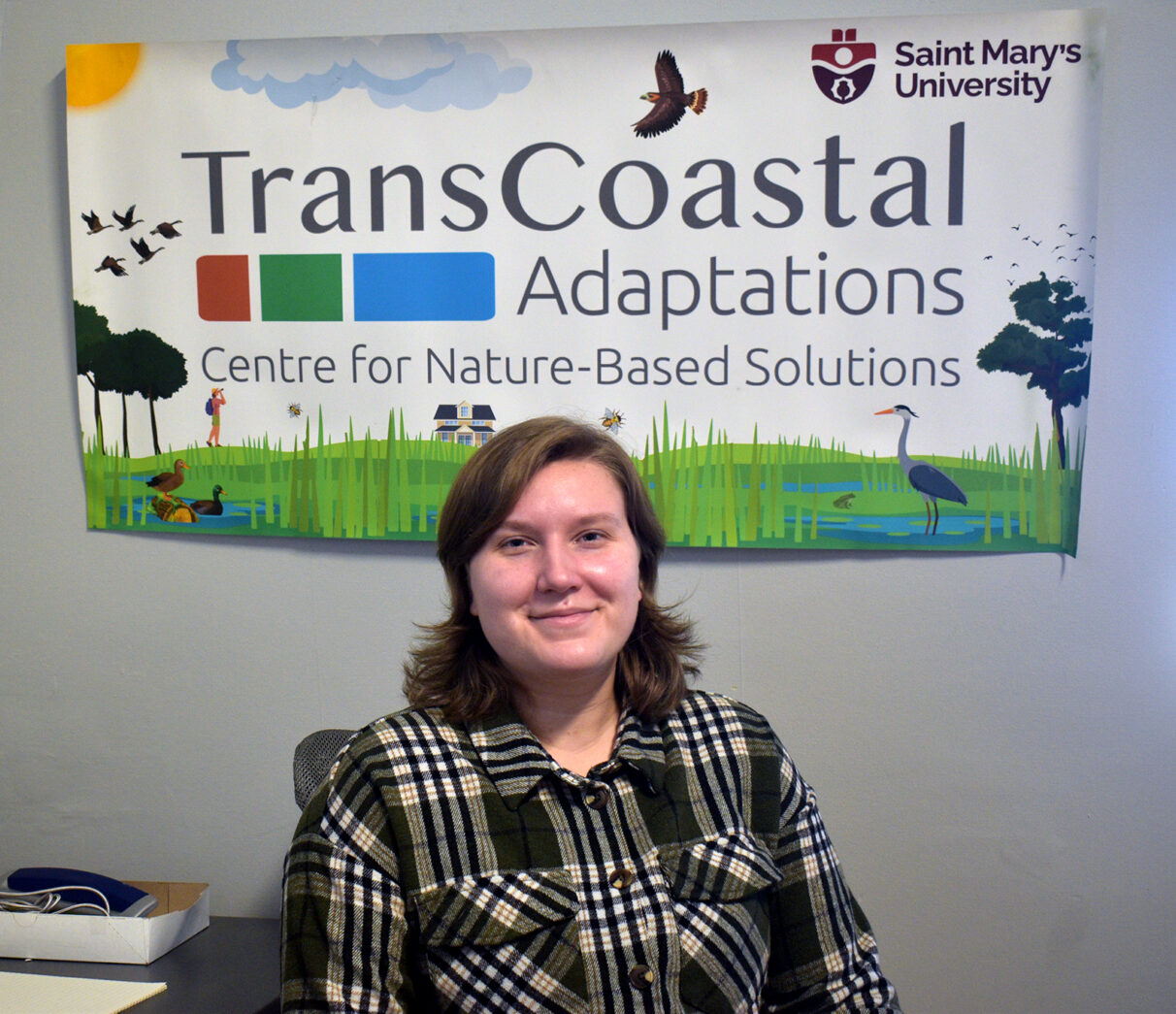Local research centre receives funding to help restore N.S. shorelines
TransCoastal Adaptations hopes to educate homeowners on alternative approaches to coastline protection

caption
A slumping and eroding bank on the shoreline at Sandhills Provincial Park, Barrington Municipality, on Nov. 10. The shoreline in Barrington is one of three areas that research group TransCoastal Adaptations seeks to help protect.A local research organization has received provincial funding to help homeowners in the town of Pictou and the municipalities of West Hants and Barrington to protect their shorelines.
Based at Saint Mary’s University, TransCoastal Adaption was granted $238,098 as part of the province’s Sustainable Communities Challenge fund, which supports community-led projects with the intent to help protect communities, residents, and natural areas from the impacts of climate change.
“Sea level rise is a beast. It’s a monster, that’s unfortunately, coming for us pretty quick. Especially in the Nova Scotian context, we’re going to see some of the highest relative sea level rise in the country, just due to the fact that our land is also sinking,” said Kelly Umlah, the education and outreach co-ordinator at TransCoastal Adaptation: Centre for Nature-Based Solutions.
The group promotes nature-based solutions, which involve working with nature to develop sustainable methods of design that weave natural features into the built environment to adapt and fight the effects of climate change.
In the case of Nova Scotia’s shorelines, it would use vegetation and berms to help communities defend against flooding and erosion and protect local ecosystems.
“Not only is it looking at protecting the shorelines and trying to reduce the effects of climate change wherever possible. It’s also restoring habitat for species. That biodiversity is really struggling right now,” Umlah said.
Umlah says TransCoastal Solutions chose Pictou, West Hants and Barrington because their vulnerabilities to climate change and their locations make it hard to access professional resources.
“They are far from Halifax-the hub of resources. They are small and spread out,” Umlah said.
“Pictou, where they’re on the Northumberland Strait, which was sort of devastated by Fiona — Hurricane Fiona back in 2022. And then Barrington, because it is so far south … and then West Hants is also dealing with the incredibly high tides of the Bay of Fundy and erosion,” Umlah said.

caption
Kelly Umlah is the education and outreach co-ordinator at TransCoastal Adaptation: Centre for Nature-Based Solutions. TransCoastal Adaptations works on altervative approaches to protecting Nova Scotia shorelines.
Umlah said the funding will go toward educating homeowners about nature-based solutions and providing free shoreline assessments that will help reduce the costs for the homeowner to adopt these strategies.
Umlah said because most of Nova Scotia’s coastline is privately owned, “it really is on the homeowners and the private property owners to provide that habitat for that specific niche.”
Umlah said nature-based solutions have advantages over man-made forms of coastal protection such as rock walls and erosion-resistant rock piles known as riprap.
“It’s hard to find those materials, and they end up being quite expensive. And then you have to put them there and that requires engineering, and high-tech stuff that ends up costing more in the long term,” Umlah said.
Umlah said that a recent report found that nature-based solutions were at least 30-70 per cent more resilient to the effects of climate change than man-made alternatives.
“In the long run, hard structures reflect wave energy. And so that energy is either going up or down to cause other problems, or around to cause problems for your neighbours … it doesn’t sort of take that energy and dissipate it as vegetation does,” Umlah said.
However, Umlah pointed out that educating the public on the effectiveness of nature-based solutions is a challenge. Umlah said many people are more comfortable with hard engineered structures and don’t yet see a natural shoreline as protection.
“There’s definitely a paradigm shift that we need to sort of facilitate,” Umlah said.
“It’s even more difficult to sell in that in some ways, because we don’t have examples.”
“So, this funding is exceptionally important to help support actually getting some [nature-based projects] on the ground to be able to spread it wider and provide those benefits as best we can.”
About the author

Giancarlo Cininni
Giancarlo Cininni is completing his fourth year of the BJH program. He has experience reporting in Brazil and Canada. When he is not staring...